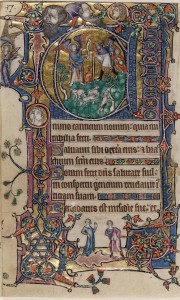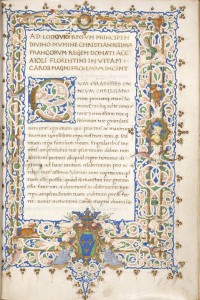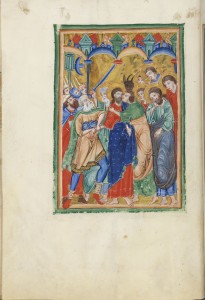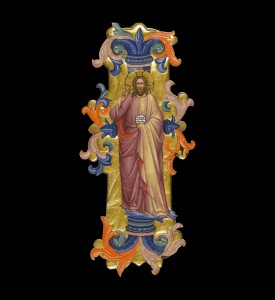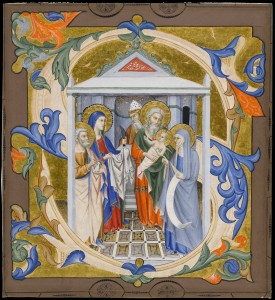Precious metal extensively used by illuminators
Gold could be applied in liquid form ('shell' gold) or as thinly beaten solid sheets (gold leaf). Gold leaf was often applied over a ground layer which in the majority of cases contained gypsum and a red clay ('bole'). Other calcium compounds could substitute gypsum, and vermilion was occasionally used to colour this ground red. Grounds of different colours - blue, grey, black, white or yellow - were less common, and their use is often typical of a specific chronological period or geographic location. Due to the extreme thinness of the metallic leaf, the colour of the ground would subtly change the overall appearance of the gold, so the choice of a particular colour was part of an illuminator's intended aesthetic effect.
